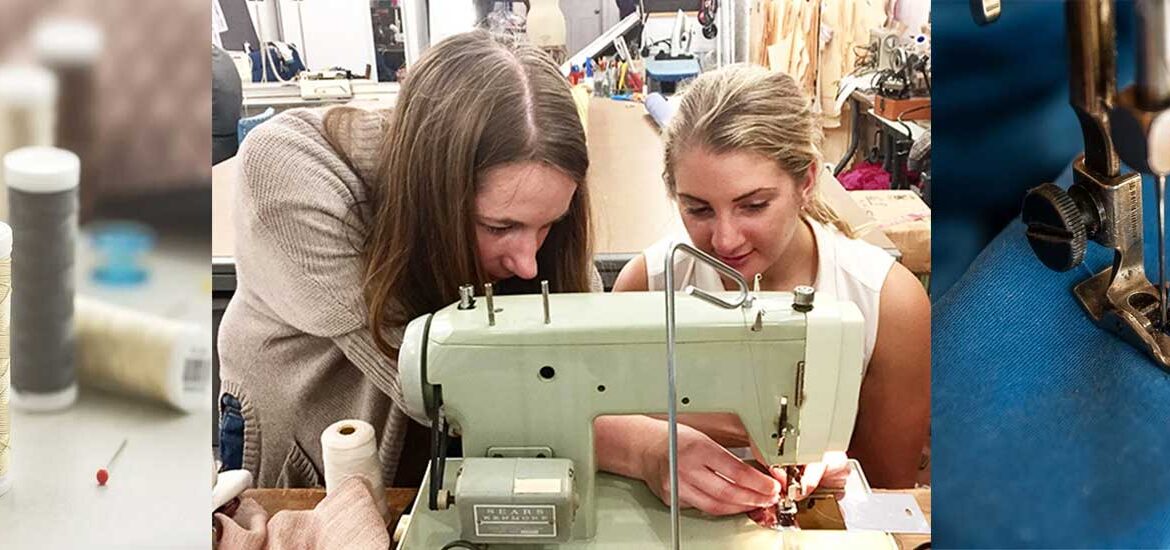Sewing isn’t only confined to the walls of fashion designer’s studios, but it is one of the most popular hobbies. Among people who are not related to fashion professionally, but enjoy sewing their own dresses, curtains, cushion covers, and more, sewing is more of a regular life skill than a profession. The complex nature of sewing makes it less practical at times for people who do not have formal training for it. To make it a bit easier for you, here are 7 general tips to keep in mind while sewing, that can make it more simple for you.
Press Your Sew
A common mistake that a lot of people make is that even after marking the area, they miss the exact area that has to be seen. This turns out to be a blunder, mis-shaping the whole piece of cloth. Here’s what you can do is press the area, more specifically marking the area, and keeping the cloth in place. It emphasizes more on the exact area, making it easy to hold the cloth while stitching.
Be More Precise
Be more specific with markings. Along with marking it, use tapes to make it more clear with the seam. You can always prefer markings on sewing machines, it can help you with seam allowance. Practice more, make more rough works and scraps before you jump on the final dress or design.
Use Your Suitable Thread and Appropriate Fabric
Every fabric requires specific sewing techniques and thread for perfect stitch and shaping. You must look for a suited color, depending on the color of the fabric, and area you need to sew. Be very careful while threading the machine, refer to the machine guide if required. It impacts the overall sewing majorly. For better fitting and look of any stitched Shirt or cloth, you must mind the quality of the fabric chosen. Low-quality fabrics may attract you because of the low price and similar look, but it never ends up as good as high-quality fabric does. Except the final look, fabric may turn out to be problematic while stitching, it may tear or does not fall in place, may not adopt the proper foldings and design. Every attire and design required a specific fabric to adopt and provide the desired look.
Know How to End
Find different styles to end you seam suitable for your dress, style and the end point. Any art in the world is nothing but a constant state of learning and trying on new things, same goes to stitching. Look out for different seams on clothes in your closet, try them on. Understand where you might need to open the seam again, add difficult to open or change stitching and designs in the end when you are sure about the design.
Don’t Rush
An art like designing clothes out of fabric requires dedication and time. Start slow, make small progress, you may create blunders at the end, but don’t give up, instead learn from what you did wrong. Never afraid to use ripper to rip off the wrong done seams, these re-dos make you improve your mistakes. It’s not how the final results turn out, the whole process is as important as finished products. Don’t try to excel everything at once, start from basic stitches, and move to a more complex one but with more practice and better hold on to a more basic one.
Look at The Details
Give small details to your work, including topstitching, little textures to your dress, tiny trims, and more. Look for space for small changes and areas that may create big look differences. Fuse different ideas from different styles you may get in stores, your closet, movies, vintage shows, add on your creativity in spaces making it an entirely different set of attire. Pretty dresses with complex-looking stitches are nothing but a set of small and simple details at necessary places.
Not Too Tight, Not Too Loose
To keep stitching strong and make it a perfect fit for your body, you may end up using thread in a way that puckers at places. It neither makes stitching strong, nor it makes a better fit, opposite to the idea, such a seam is more likely to open up and look untidy, unfit and messed up. On other hand, sometimes to provide flexibility and space, you may leave it too loose, that doesn’t keep the cloth in place, and may look too loosely stitched, with unwanted twists and turns in the cloth. You need to maintain a proper balance between both of these.
To be good at something, one needs to have patience, follow a continuous process of learning and regular practices. Especially when something is so creative and yet set on certain decided skills, to combine these both. To follow the rules and yet find your new signature, you first need to excel what has been pre-designed and taught, then add on to it, but most importantly work on your skills constantly.

